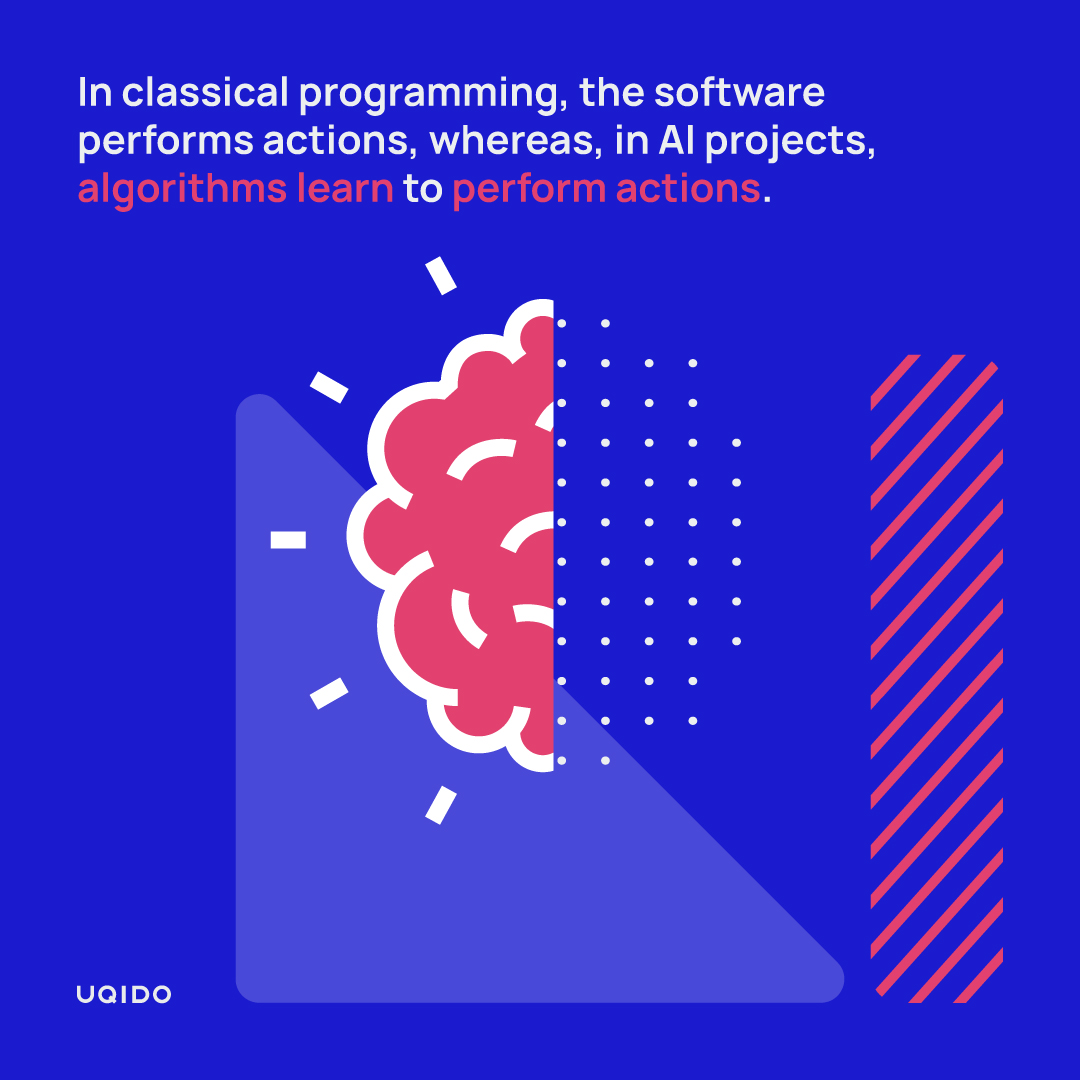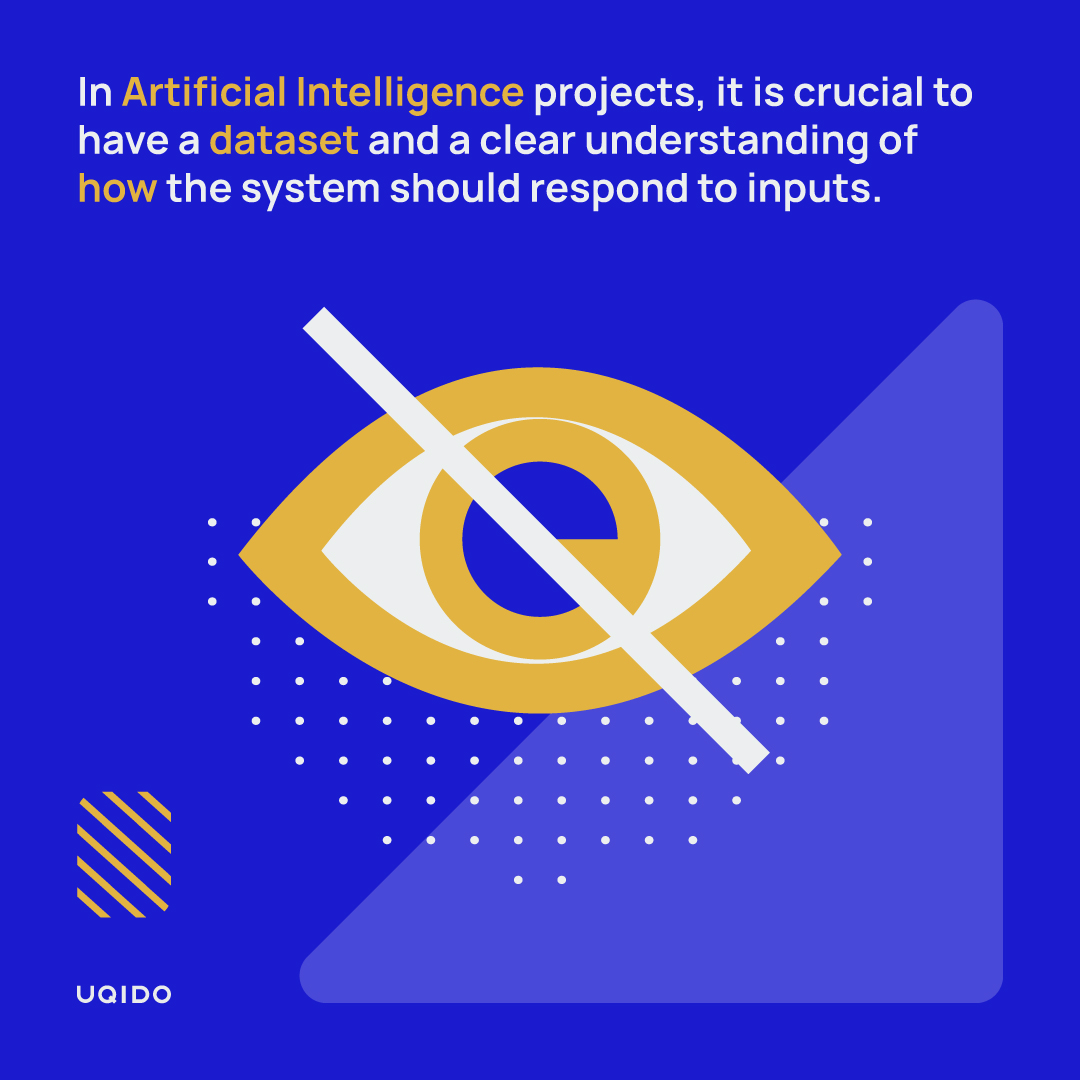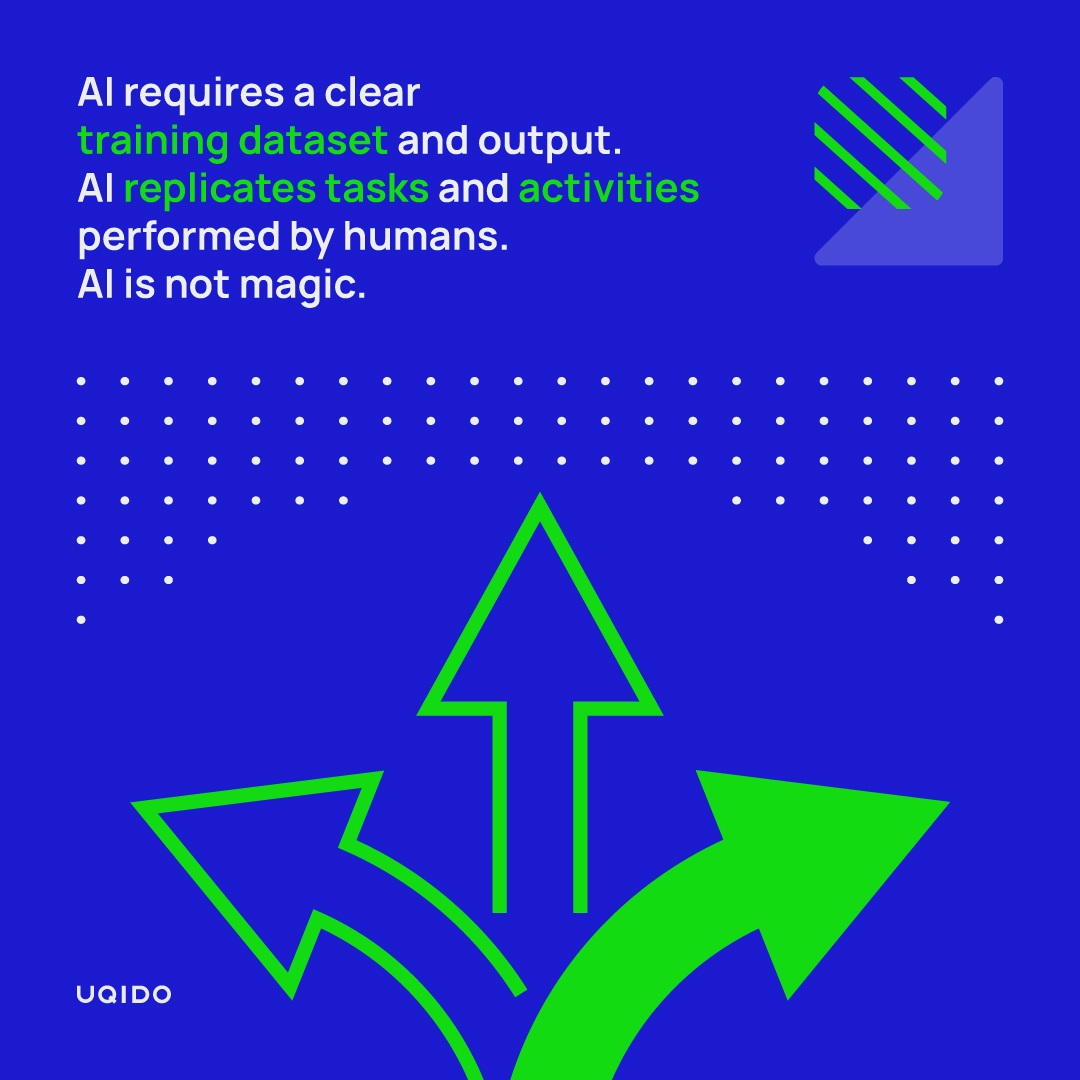When developing an AI algorithms it is crucial to know what we want to achieve.
With AI, a company embarks on a journey that will enable it to build the foundations of its future growth and establish its presence in the market.
AI is not magic
When faced with a new design challenge, we always strive to understand how AI can potentially support our client’s business. Typically, we compare the opportunity of AI with the advantages of traditional software, and to explain this to our clients, we use the metaphor of the Cartesian plane.
We can represent a traditional software with a cartesian plane. If the x-axis represents the input and the y-axis represents the output, the software corresponds to the curve that connects input and output. It means the development team creates a software that achieves a specific output from specific inputs.
This is an example of normal development, where the dev team has all the specifications to create the desired software (the curve) to obtain the value of the y-coordinate from the x-coordinate.

In AI projects, the situation is different. The team does not have specifications on how the algorithm should work, but has instead a large dataset. The dataset is a pool of data that collects interconnected input and output. The AI system must study them, learning autonomously to transform an input into an output.
Too complicated? Let’s give an example
In Medicine, we have collected ultrasound and magnetic resonance images for years. Researchers classify these images with various labels such as “healthy,” “dangerous mass,” “right lung smaller than left,” etc. Originally, Artificial Intelligence projects started with these cases to correctly recognize the images. To do so, we trained algorithms. For each input (the ultrasound image), there is a corresponding output (the labeled ultrasound image), and the AI learned how to correctly label future input images by training on the existing database.

The AI system is provided with a training dataset, teaching it to recognize which are the original input images and how they should be classified. The higher the number of these data, the better the performance of the Machine Learning system, which can practice interpreting a large volume of images. This way, when it receives a new ultrasound image not present in its database, the algorithm will be able to classify it, or diagnose it correctly.
Our AI is interpretable
A fundamental characteristic that our Artificial Intelligence engine must have is interpretability. It should be possible to evaluate the result generated by the machine using qualitative parameters associated with the output itself. In other words, humans should be able to assess the response of the AI. The system must have elements to judge, reason, and deduce the correct answer. By providing a series of parameters through complete and comprehensive datasets, the AI is able to make the data interpretable, leading us to the expected output.

When working with AI, one embarks on a journey that, with the right timing, will lead the company to create the pillars of its future growth. The foundations must be solid, comprehensive, and based on a clear vision of what we want to achieve in the future. Only then can AI answer the right questions.
It is up to us to enable machines to lead us in the right direction. The clearer our starting points are, the better the system we will create. In this sense, when working with Artificial Intelligence, the design phase is delicate and indispensable. This is where the fundamental step of Design comes into play.
